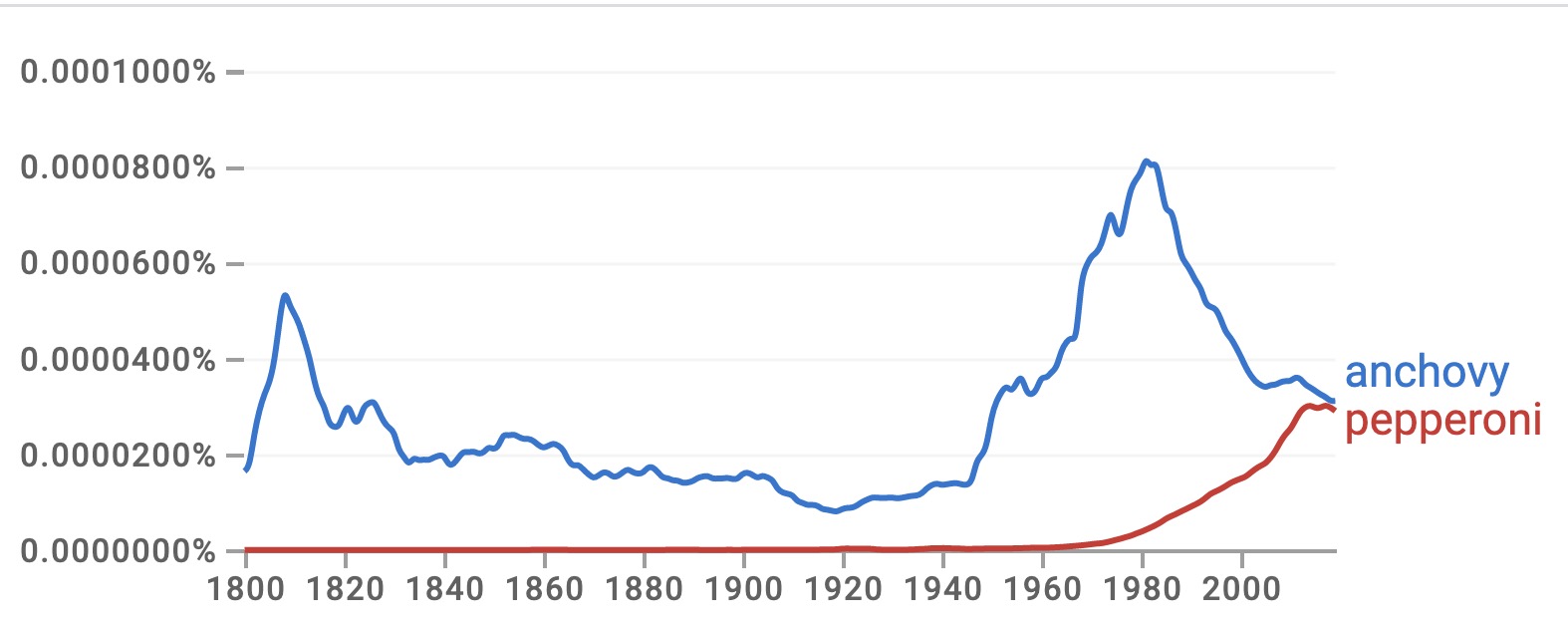A IS FOR AIOLI
By:
February 9, 2023
An installment in CONDIMENT ABECEDARIUM, an apophenic food-history series from HILOBROW friend Tom Nealon, author of the seminal book Food Fights and Culture Wars: A Secret History of Taste (2016 UK; 2017 US); and also — here at HILOBROW — the popular series STUFFED (2014–2020) and DE CONDIMENTIS (2010–2012).
CONDIMENT ABECEDARIUM: SERIES INTRODUCTION | AIOLI / ANCHOVIES | BANANA KETCHUP / BALSAMIC VINEGAR | CHIMICHURRI / CAMELINE SAUCE | DELAL / DIP | ENCURTIDO / EXTRACT OF MEAT | FURIKAKE / FINA’DENNE’ | GREEN CHILE / GARUM | HOT HONEY / HORSERADISH | INAMONA / ICE | JALAPEÑO / JIMMIES | KECAP MANIS / KIMCHI | LJUTENICA / LEMON | MONKEY GLAND SAUCE / MURRI | NƯỚC CHẤM / NUTELLA | OLIVE OIL / OXYGALA | PIKLIZ / PYLSUSINNEP SAUCE | QIZHA / QUESO | RED-EYE GRAVY / RANCH DRESSING | SAMBAL / SAUERKRAUT | TZATZIKI / TARTAR SAUCE | UMEBOSHI / UNAGI SAUCE | VEGEMITE / VERJUS | WHITE GRAVY / WOW-WOW SAUCE | XO SAUCE / XNIPEK | YOGHURT / YEMA | ZHOUG / ZA’ATAR | GOOD-BYE TO ALL TZAT(ZIKI).

People (maybe even me) have long traced a more or less direct line from Pliny’s description of a garlic/olive oil emulsion in the 1st century CE to the invention of modern mayonnaise.
Here’s what really happened:
Aioli (or allioli) is a Mediterranean sauce. It predates even the concepts “France” or “Spain”; it predates 6 of the 7 wonders of the ancient world, maybe all of them. It was maybe invented by locals like the Celts or Iberians, but could just as easily have been brought to the region (with olive oil) via the Phoenicians some 2500-3000 years ago. It is simply olive oil, garlic, maybe salt, and a process for blending them together. The idea that it would have required an “invention” to come up with aioli is just dumb Enlightenment thinking. Aioli would have been discovered over and over again until it became common knowledge enough that a Roman historian wrote about it. Garlic is full of emulsifiers — it’s a little tricky to make, but a mortar, a pestle, and a little patience is all that is required.
The first written-down egg emulsion is hollandaise in 1651, and mayonnaise isn’t mentioned until a century later. Even mayo wasn’t really standardized as an egg-based sauce until the middle of the 19th century – Careme, for example, had three mayos in his 1828 cookbook and only one used egg as the emulsifier. The others were more like other Catalan/Provençal aioli dishes which use stock or potato to emulsify with the olive oil and garlic.
Though the French claim to have invented mayonnaise (quite variously: at the battle of Mahon in 1756, or in Mayenne or Bayonne, or moyeunaise from the word for “egg yolk” or magnonaise from the word “to stir”), we should not be distracted by these (surely erroneous) attributions. Mayo is, at best, a few-hundred-years-old side note to the 2-3+ thousand-year story of aioli.
Mayo was standardized and commercialized the way we now know it because: it’s easier to make with egg yolk (which is not just an emulsifier but basically itself an emulsion); it can be made with industrial equipment to use egg white as well as yolk; and it can be made shelf-stable (store-bought mayo doesn’t need to be refrigerated, even after opening — which, I think we can all agree, is pretty troubling). Like calling every flavored mayo “aioli” because it seems cooler to do so, the whole industrial mayonnaise thing is a scam.
Aioli is unenclosable. Heat it too much and it breaks (delightfully). Refrigerate it and it breaks. Try to bottle it, transport it — it breaks. It is held together not by beating it into submission but by coaxing it into an emulsion. The egg yolk just serves to domesticate aioli — to turn something ephemeral, feral, and a little magical into something you can mix chipotle with and put on your taquito.
So make some actual aioli! It turns into an emulsion that looks like homemade mayo even though it doesn’t have an egg yolk (you can see where folks got the idea to add yolk or having seen it, to reproduce it with one). The olive olive turns it a silky yellow/green color (mine often more the former because I buy cheap extra virgin) and the emulsification takes the sharpness from the garlic while leaving the flavor. I use a big stone mortar and pestle and smash the salt and garlic until it’s a paste (try two medium cloves and a good sized pinch of coarse salt), then drops of olive oil while pestleing until it emulsifies. As it takes form you can add olive faster without worrying that it will break.

The only fish that is a condiment — maybe the only creature?
Anchovies, still immensely popular in the Mediterranean and Asia, have fallen on extremely hard times in the US and UK, often finding themselves headlining lists of food we hate. For hundreds of years anchovies were a popular toast spread and general flavor enhancer (no English home was complete without a jar of Patum Peperium, the Gentleman’s Relish) and, though never quite as popular in the U.S., for most of the 20th century they were synonymous with pizza.
What happened?
Well, a few things: Umami competition sprung up as Marmite was commercialized at the beginning of the century and MSG was invented in 1908. Also, British people stopped subsisting on toast at some point in the 1950s.
In the U.S., pepperoni (an Italian-sounding made-up word) was invented as a cheap, quick cured, and thinly sliceable topping to replace the popular but pricier anchovy. Pepperoni was especially popular with the emerging chain pizza parlors springing up in the 1970s and grew rapidly as they did. It filled the same niche — the peppery flavor married with the acid of the tomato and cut through the fat, as the umami of the anchovy did, and it was similarly polarizing. Anchovy went from the champagne-filled bathtub of lots of people like it to the oubliette of lots of people hate it as fast as you can say “better profit margins.”
At the same time that Big Pepperoni began flexing its muscles, the CIA-sponsored Pinochet regime tanked the anchovy industry by mixing two parts Milton Friedman with one part political assassination and stirring vigorously. We may never know exactly what role was played by the J. Geils Band.
But really, anchovies are quite good. Try the Italian condiment bagna cauda, or provençal anchoyade, which is basically aioli with anchovies. Use the aioli recipe give above, but add some anchovies. Or just put some on bread or a cracker. I even like the lousy canned ones wrapped around a caper. Put some on a pizza!
TOM NEALON at HILOBROW: CONDIMENT ABECEDARIUM series | STUFFED series | DE CONDIMENTIS series | SALSA MAHONESA AND THE SEVEN YEARS WAR | & much more. You can find Tom’s book Food Fights & Culture Wars here.

